The Urban Development Institute of Australia (UDIA) State of the Land report has evolved over the last decade to become the most comprehensive annual overview of the Australia’s capital city new home markets. New residential construction is a key component of the Australian economy with circa $63B worth of work undertaken across the nation in 2017/18.
The State of the Land report delves behind the macro economic statistics to provide ‘ground-up’ insights into the annual performance of the new home development sector across our growing capital cities. Prepared by the UDIA National Secretariat in collaboration with each UDIA state office and our State of the Land Research Partners, Research4 and CoreLogic, the report provides an important annual industry health check and outlook for the year ahead.
For the fifth year running the National Land Survey (NLS) undertaken by Research4 provides the core market intelligence underpinning the report’s greenfield analysis. The NLS provides unique insights into the market performance of over 1,000 new residential land estates across the nation. UDIA is delighted to showcase the Research4 NLS data and analysis which once again highlights the fundamentally important role of the greenfield sector for housing our growing population.
This year we have once again partnered with CoreLogic who have provided the core multi-unit market intelligence featured in the report. CoreLogic’s customised multi-unit data allows unique insights into the nation’s dynamic apartment and infill markets which continue to evolve across the nation.
As our urban regions continue to mature and policy settings continue to emphasize urban renewal and urban consolidation, the importance of multi-unit development will only increase across Australia’s capital city housing markets. The new residential housing estates emerging in greenfield land release areas and the apartment and medium density projects being delivered within established areas are where public policy hits the ground on issues such as housing affordability, population, city structure, economic growth, land release, infrastructure and energy use.


